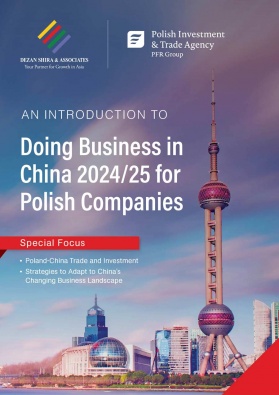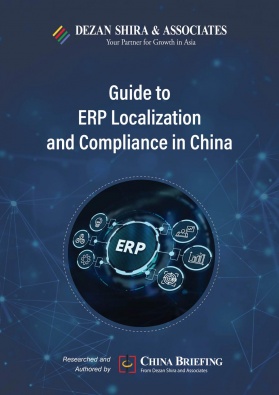Exploring China’s Luxury Market: Emerging Trends and Future Prospects
With a rapidly growing middle class and affluent consumers, China stands as one of the largest markets for luxury goods. However, this growth trajectory is affected by economic uncertainties and changing consumer behavior. In this context, it is essential for businesses to closely monitor emerging trends and adapt their strategies for the Chinese market.
China’s luxury market is a significant player on the global stage, valued at approximately US$57 billion annually. This market is driven by a mix of domestic and international purchases, with platforms like DeWu offering substantial discounts of 20 percent to over 50 percent on luxury products sourced from abroad. Emerging trends indicate a growing preference for second-hand and grey markets as consumers seek more affordable options amid price increases from luxury brands.
This shift raises concerns for companies like LVMH, which recently reported a 3 percent decline in quarterly sales, marking its first downturn since the pandemic, largely due to weakening demand in China and Japan.
In the second quarter, sales across 48 luxury brands on DeWu surged 19 percent year-on-year, exceeding RMB 7 billion (US$984.4 million). However, in September, China’s retail sales had shown only modest growth of 3.2 percent, indicating potential difficulties for global luxury brands that rely on the Chinese market, which accounts for about 25 percent of their revenues.
Before the pandemic, Chinese consumers were the world’s largest spenders on luxury goods, contributing to one-third of global sales. A significant portion of these purchases occurred overseas, particularly in Europe, while domestic sales accounted for the remainder.
In this article, we explore the emerging trends in China’s luxury market and examine its prospects.
Overview of China’s luxury market
China’s luxury market is a dynamic and evolving sector that has shown remarkable resilience and adaptability in recent years. This overview provides insights into the market size, growth trends, key segments, and major players shaping the landscape.
Market size and growth
As of 2023, China’s luxury market reached approximately RMB 449 billion, reflecting a 12 percent year-on-year growth after recovering from the pandemic-induced downturn in 2022. Analysts anticipate that the market will continue to grow at a mid-single-digit rate in 2024, driven by a combination of recovering consumer confidence the rise of the middle class, booming urbanization, and a robust high-net-worth individual (HNWI) base. By 2030, it is projected that Chinese luxury consumption will account for 35-40 percent of the global luxury market, highlighting China’s pivotal role in the sector.
However, this optimistic outlook is contingent upon several key factors. First, the pace at which consumer sentiment improves will be crucial for sustaining growth. Additionally, the extent to which consumers continue to favor international purchases over domestic options will significantly impact local sales. Lastly, a stable economic environment will be necessary to maintain the high-net-worth individual base that drives luxury consumption.
Key segments and players
The luxury market in China is segmented into categories with distinct growth patterns and competitive dynamics. However, two key characteristics define the overall landscape:
(a) a high brand concentration, with a few key players dominating the market and (b) a significant share held by foreign brands, while domestic luxury brands are gradually gaining ground.
Fashion and lifestyle
This segment has led the recovery with growth rates between 15 percent to 20 percent in 2023. Brands like Miu Miu and Dior have been particularly successful in capturing consumer interest.
Beauty products
The beauty category saw solid growth of approximately 8 percent, driven by strong demand for fragrances and makeup.
Key brands include HR, Giorgio Armani, La Mer, Cle de Peau BEAUTE (CPB), Parfums Christian Dior, Guerlain, Givenchy, Kenzo, Chanel, GUCCI, YSL, GUCCI, etc.
Leather goods
This segment experienced growth rates of 10 percent to 15 percent, although consumers have shown a preference for lower-priced items within this category.
Key brands include Hermès, Chanel, LVMH, Dior, Prada, Fendi, Bottega Veneta, Balenciaga, Celine, Loewe, etc.
Jewelry
Similar to fashion, jewelry has rebounded strongly, reflecting a growing appetite for luxury accessories among consumers.
Key foreign brands that are popular in China include Cartier, Tiffany, Bulgari, Van Cleef & Arpels. Different from other segments, domestic brands such as Chow Tai Fook, Chow Sang Sang, Lao Fung Cheung, Chow Tai Sang, and Luk Fook also share a large market in this segment.
Watches
This category saw more modest growth of about 5 percent to 10 percent, influenced by brand polarization and changing consumer preferences.
Key brands that dominate the market include Rolex, Omega, Patek Philippe, Cartier, Channel, Longines, Tissot, Radar, Blanco, and Piaget, etc.
In addition to these established names, several emerging luxury brands are making their mark:
- DUANMU (端木良锦): This brand focuses on high-quality textiles and traditional craftsmanship, appealing to consumers interested in cultural heritage.
- Shangxia (上下): Known for its blend of modern design with traditional Chinese elements, Shangxia is gaining recognition for its unique aesthetic.
- Lao Feng Xiang (老凤祥): A jewelry brand that integrates traditional craftsmanship with contemporary designs, appealing to consumers’ appreciation for heritage.
- Xander Zhou: A contemporary designer brand that combines streetwear aesthetics with luxury fashion, attracting younger demographics seeking uniqueness.
These emerging brands are benefiting from the growing trend of Guochao, which emphasizes local culture and identity. As younger consumers increasingly favor niche labels that reflect their values and preferences, these brands are well-positioned to capture a significant share of the luxury market in China.
At the same time, some low-key brands that prioritize quality and tailor services, instead of logo displaying, are gaining momentum. Brunello Cucinelli, Stefano Ricci, Loro Piana, and China’s Icicle are some typical examples.
Shifts in consumer behavior that affect China’s luxury market
The Chinese luxury market is undergoing significant transformation, driven by shifts in consumer behavior and economic factors.
- Domestic purchases are on the rise: Domestic luxury purchases are becoming increasingly common. While overseas spending is rebounding, the appeal of the local market persists due to product availability and a narrowing price gap in duty-free offerings, particularly in Hainan, which attracted 6.7 million shoppers in 2023.
- Changing consumer values: The COVID-19 pandemic has shifted consumer priorities, with health and safety emerging as top concerns. Nevertheless, in 2023, luxury watches, jewelry, and iconic bags saw significant growth, as consumers prioritized goods that retain value. Interestingly, medium luxury spenders plan to increase watch purchases despite an overall spending cut.
- Emergence of “luxury shame”: In 2024, the concept of “luxury shame” is reshaping strategies for high-end brands. Economic uncertainty and social pressures have led consumers to prefer discreet, high-value items over overtly flashy products. This trend reflects a cultural transformation in the perception of luxury, where status symbols are less emphasized.
- Growth of the second-hand market: The second-hand luxury market, encompassing platforms like Plum and Alibaba’s Xianyu, has experienced over 30 percent annual growth since 2020. LVMH, despite defending its upmarket strategy, is facing a changing landscape as more consumers explore second-hand options.
- Gen Z: Generation Z is transforming China’s luxury market, with nearly 46 percent of this cohort making their purchases online. As digital natives, they expect seamless online experiences and personalized interactions, prompting brands to adapt their sales channels. This generation prioritizes sustainability and inclusivity, with 84 percent willing to pay more for eco-friendly products. Many prefer second-hand or rental luxury items, reflecting a shift towards conscious consumption.
- Changing sales channels and customer experiences: Today’s consumers seek immersive experiences, such as exclusive events and personalized services, which enhance their connection to the brand. This shift reflects a broader cultural trend where luxury is defined by the stories and emotions tied to purchases, rather than mere ownership of items. As a result, brands must evolve their offerings to include tailored experiences that resonate with consumers’ desires for authenticity and individuality
Changing strategies
Targeting key consumer segments
Luxury brands are increasingly focusing on Very Important Consumers (VICs), high-net-worth individuals who significantly drive luxury consumption. China has around 780,000 individuals with investable assets exceeding US$1 million, accounting for 42 percent of luxury sales. Brands are implementing initiatives to create a sense of exclusivity and enhance customer experience for these clients.
Digital innovation and multichannel sales
The COVID-19 pandemic and the shopping preferences of young generations have pushed through the adoption of digitalization and artificial intelligence (AI) technologies in the luxury sector. Luxury brands have been employing innovations that enable instant communication with consumers across online and offline platforms. Offline stores start to focus more on more immersive and unique customer experiences, while online channels enable frictionless and more personalized shopping scenarios. The “online + offline” combination empowered by digital and AI technology has helped to redefine consumer experience and create various consumer touch points.
Will China’s luxury market continue to grow?
As China approaches the end of 2024 and looks ahead to 2025, its luxury market is navigating a complex landscape. According to Bain & Company’s China Luxury Report, the market is projected to grow at a mid-single-digit rate in 2024, following a significant rebound of 12 percent in 2023. However, this growth trajectory is influenced by economic uncertainties and shifting consumer behaviors.
The Chinese economy has experienced a slowdown, with GDP growth recorded at 4.8 percent as of Q3 2024. This economic deceleration is impacting consumer confidence and spending patterns, particularly in the luxury sector. Notably, there has been a decline in high-ticket gifting, with hard-luxury gifting decreasing by 9 percent compared to the previous year. Many consumers are now opting for more affordable luxury items and are increasingly turning to overseas shopping due to better pricing.
While there are signs of improving consumer sentiment, many shoppers remain cautious. Reports indicate that approximately 46 percent of surveyed consumers plan to reduce their spending on luxury goods, reflecting broader economic concerns.
Despite these challenges, some analysts express cautious optimism about the long-term prospects for China’s luxury market. They believe that if brands effectively adapt their strategies to align with changing consumer preferences and economic conditions, a recovery phase could begin in 2025. Additionally, younger generations are showing a growing interest in niche brands over traditional luxury labels, which may reshape market dynamics and create new opportunities for brands that cater to these evolving preferences.
About Us
China Briefing is one of five regional Asia Briefing publications, supported by Dezan Shira & Associates. For a complimentary subscription to China Briefing’s content products, please click here.
Dezan Shira & Associates assists foreign investors into China and has done so since 1992 through offices in Beijing, Tianjin, Dalian, Qingdao, Shanghai, Hangzhou, Ningbo, Suzhou, Guangzhou, Haikou, Zhongshan, Shenzhen, and Hong Kong. We also have offices in Vietnam, Indonesia, Singapore, United States, Germany, Italy, India, and Dubai (UAE) and partner firms assisting foreign investors in The Philippines, Malaysia, Thailand, Bangladesh, and Australia. For assistance in China, please contact the firm at china@dezshira.com or visit our website at www.dezshira.com.
- Previous Article Navigating China-Uzbekistan Investment and Trade Opportunities
- Next Article China’s New Measures Open A-Share Market to Foreign Investment








